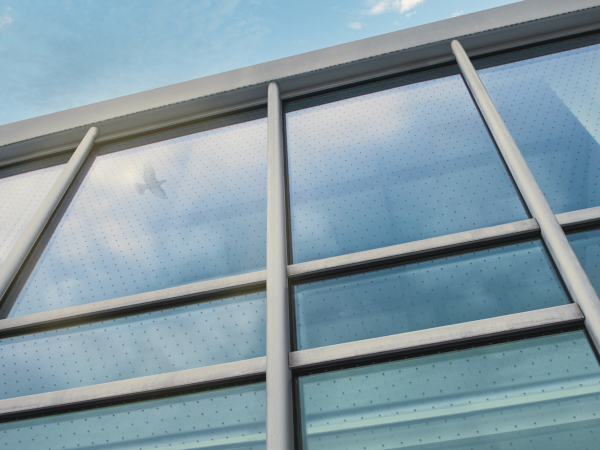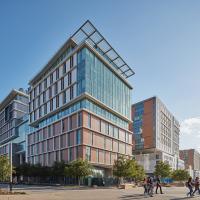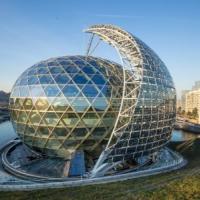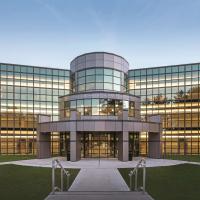Date: 4 June 2012
The concept is simple; more daylighting means less artificial light and fewer square feet of necessary glazing, which results in lower energy and environmental costs.
The Energy and Performance Equation
More specifically, savings from daylighting can cut lighting energy use in some buildings by up to 80 percent, according to the U.S. Department of Energy's (DOE) Federal Energy Management Program. In terms of savings, the DOE reports that many commercial buildings can reduce total energy costs by up to one-third through the optimal use of daylighting. However, the achievable energy use efficiencies in residential construction are just beginning to be quantified.
Glass Infill
Modern skylights containing glass infill (similar to windows) typically use sealed insulating glass units made with two panes of glass.
Glass units typically include at least one low emissivity (low-E) coating applied to one or more glass surfaces to reduce the U-factor and Solar Heat Gain Coefficient (SHGC) by suppressing radiant heat flow. Many varieties of low-E coatings also reduce daylight potential to different degrees. High purity inert gas (typically argon) is frequently used in the space(s) between panes, and advances in thermally-efficient glass spacing and supporting elements can further improve thermal performance of glass-glazed skylight assemblies. Assemblies with three panes can sometimes be cost-justified in the coldest climate zones, with the trade off of some loss of visible light with the addition of the third layer of glass.
Plastic Infill
Plastic glazing infill is commonly used in many skylights and TDDs. These assemblies typically contain thermally formed domes, but molded shapes are not uncommon. Domed skylights are most often used on low slope roofs, which allows for shedding of water and burning embers. Acrylic is the most common plastic glazing used for dome skylights today; however, polycarbonate and copolyester materials are also often used as glazing, where additional properties such as impact resistance may be required to meet specific demands.
Plastics used in skylights are UV stabilized and may feature other advances to improve thermal properties, which may decrease energy costs. One disadvantage when specifying this type of skylight glazing infill is the lack of an accepted procedure for measuring light transmittance.
Toplighting
Toplighting (skylights) works well with sidelighting (windows) to maximize daylighting in that 1) toplighting is able to bring light into centralized areas of a building, 2) daylight is available throughout the day from both ambient lighting from the sky and direct exposure to the sun and 3) modern transparent and/or translucent glazing and many shading and diffusing options (awnings, blinds and shades) can be utilized to avoid glare, aid in capturing sunlight at low angles and diffuse light to wider areas of floor space.
Natural Light Increases Productivity and Overall Well-Being
Evidence continues to mount regarding the psychological and physiological benefits that speak to business productivity, improved educational and healthcare outcomes and retail success. These types of daylighting/views benefits are largely psychological. Identifying—much less quantifying—them is difficult, although subjective psychological effects can be linked to objective physiological ones.
For example, newly discovered non-visual ganglion receptors in the retina of the eye, especially sensitive to blue light (e.g., sky), signal a separate neural and hormonal pathway to orchestrate circadian rhythm response by stimulating or suppressing the release of various psychoactive hormones—primarily melatonin, dopamine and serotonin. These have a positive influence on alertness, mood, memory and health. This, in turn, leads to mental stimulation and stress reduction while matching circadian rhythms. It turns out that, in effect, light acts much like a drug.
An independent study, conducted by the Heschong Mahone Group (HMG), analyzed test score results for over 21,000 students from three districts located in California, Washington and Colorado. The study concluded that students have significantly higher test scores in classrooms that optimize daylighting design than in classrooms that do not.
Daylighting systems have also been shown to increase overall work performance. For example, HSG concluded in a 2003 study that daylight illumination levels are significant in increasing mental performance and attention span.
In a study on daylighting and retail sales, HMG noted a correlation between hours of useful daylight and retail sales, with some stores noting increase in sales of up to 40 percent during the time of the study. Additionally, employees reported higher satisfaction with the lighting quality conditions than in non-daylit stores.
Achieving Good Daylight Design
Careful selection of skylights is an important step in good daylight design. A balance must be reached between low U-factor and optimal SHGC values, while preserving enough daylight supply to allow for artificial lights to be used only when absolutely necessary. To maximize energy savings in nonresidential spaces, automatic electric lighting controls should be used. With the growing awareness of the benefits of daylighting, there is a need to standardize claims of daylighting potential for interior spaces.
There is a shift in the emerging green building codes which requires good daylighting design. Language that once included “maximum allowable skylight area” has changed to requiring “minimum skylight/daylight areas.”
Many recent advances in both glass and plastic infill systems have greatly benefited end users of all skylight types. Some skylights are mainly intended to increase thermal performance, some are focused on preserving and utilizing daylight potential and some are designed to enhance strength, durability, fire resistance and other performance measures.


















Add new comment